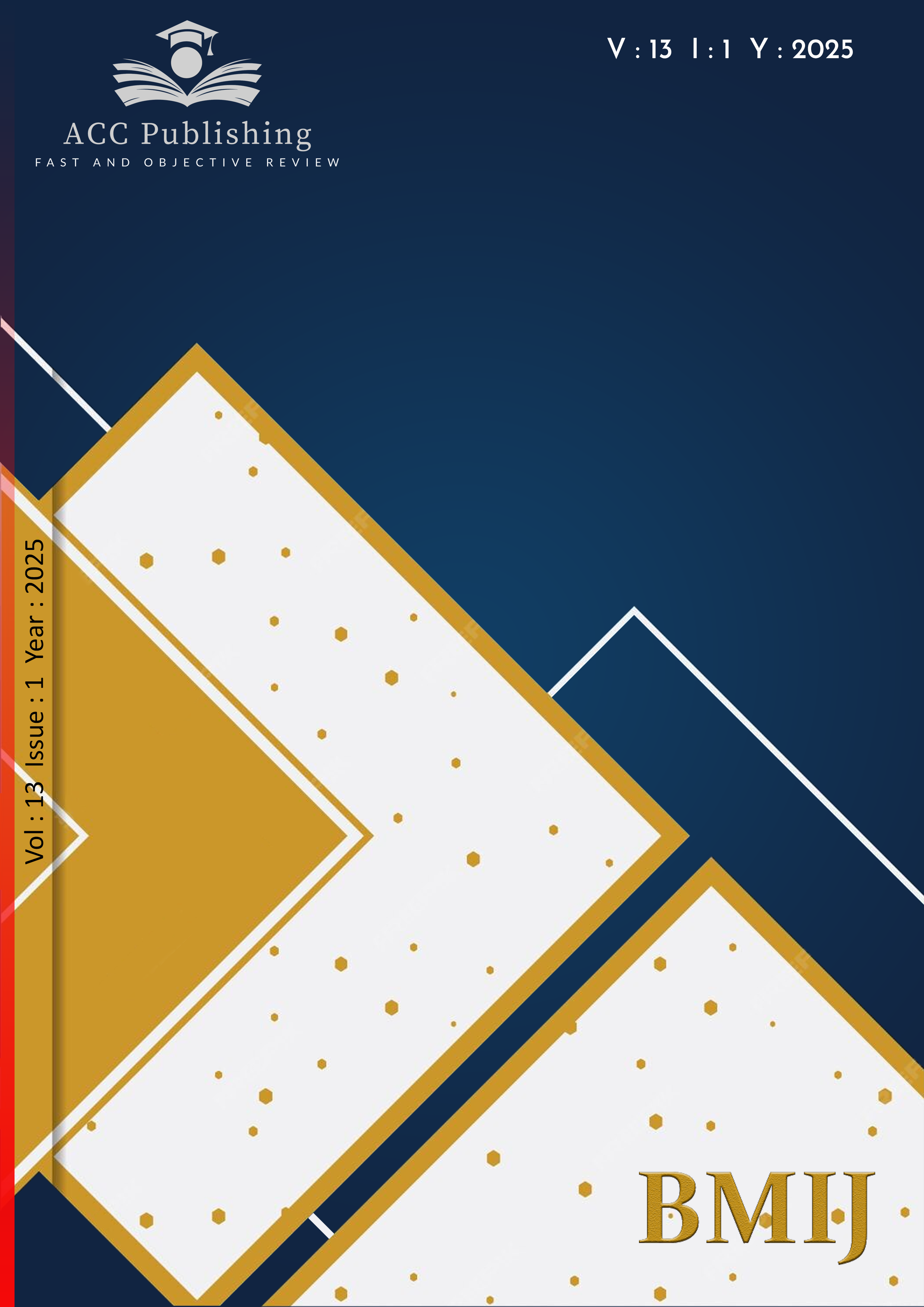Yapay zekâ kaygısının gölgesinde: Psikolojik güçlendirmenin işe adanmışlık ve işte kendini yetiştirme üzerindeki etkisi

Yayınlanmış 25.03.2025
Anahtar Kelimeler
- Yapay Zekâ Kaygısı, Psikolojik Güçlenme, İşe Bağlılık, İşyerinde Kişisel Gelişim, Koruma Motivasyon Teorisi
- Artificial Intelligence Anxiety, Psychological Empowerment, Work Engagement, Self-Development at Work, Protection Motivation Theory
Nasıl Atıf Yapılır
Telif Hakkı (c) 2025 Gaye Onan- Alper Bahadır Dalmış

Bu çalışma Creative Commons Attribution-NonCommercial-NoDerivatives 4.0 International License ile lisanslanmıştır.
Nasıl Atıf Yapılır
Öz
Günümüz iş dünyası, yapay zekâ (YZ) teknolojilerinin hızla benimsenmesiyle önemli bir dönüşüm geçirmektedir. YZ, işletmelere operasyonel verimlilik, maliyet düşüşü ve rekabet avantajı gibi fırsatlar sunmaktadır. Ancak aynı zamanda çalışanlarda işsizlik korkusu ve belirsizlik gibi kaygılara da yol açmaktadır. YZ entegrasyonu sadece teknolojik bir adaptasyon değil, aynı zamanda çalışanların psikolojik sağlığını etkileyen karmaşık bir süreçtir. Çalışmanın temel amacı, psikolojik güçlendirme ile işe adanmışlık ve işte kendini yetiştirme arasındaki ilişkileri incelemek ve YZ kaygısının bu ilişkiler üzerindeki düzenleyici etkisini ortaya koymak olarak belirlenmiştir. Bu bağlamda, Ankara ili merkez ilçelerinde faaliyet gösteren özel banka çalışanlarından veri toplanmıştır. Veriler Smart PLS 4.0 istatiksel programı aracılığı ile Kısmi En Küçük Kareler (SEM-PLS) yöntemi kullanılarak analiz edilmiştir. Analiz sonuçları, psikolojik güçlendirmenin hem işte kendini yetiştirme hem de işe adanmışlık üzerinde anlamlı ve pozitif etkilere sahip olduğu tespit edilmiştir. Ayrıca, işe adanmışlığın da işte kendini yetiştirme üzerinde olumlu bir etkisi olduğu soncuna ulaşılmıştır. Ancak, YZ kaygısının psikolojik güçlendirme ile işte kendini yetiştirme arasındaki ilişki ile işe adanmışlık ve işte kendini yetiştirme arasındaki ilişki üzerinde düzenleyici bir etkiye sahip olmadığı sonucuna varılmıştır. Diğer yandan, YZ kaygısının psikolojik güçlendirme ile işe adanmışlık arasındaki pozitif ilişki üzerinde düzenleyici bir etkiye sahip olduğu belirlenmiştir. Bu araştırma ile teknoloji odaklı iş ortamlarında çalışanların verimliliklerini artırmak için daha etkili stratejiler geliştirilmesine katkı sağlayacağı düşünülmektedir.
Referanslar
- Abid, G., Sajjad, I., Elahi, N. S., Farooqi, S., & Nisar, A. (2018). The influence of prosocial motivation and civility on work engagement: The mediating role of thriving at work. Cogent Business & Management, 5(1), 1493712.
- Akmeikina, E., Eilers, K., Li, M. M., & Peters, C. (2022). Empowerment effects in human-machine collaboration—a systematic literature review and directions on hybrid intelligence behavior patterns. Pacific Asia Conference on Information Systems 2022.
- Arslan, A., Boz, H., Yılmaz, Ö., & Boz, B. (2017). Destinasyon karar verme sürecinde riskten kaçınma ve yenilik arama davranışı arasındaki ilişki. Yönetim Ekonomi Edebiyat İslami ve Politik Bilimler Dergisi, 2(2), 162–171.
- Autor, D. H. (2015). Why are there still so many jobs? The history and future of workplace automation. Journal of Economic Perspectives, 29(3), 3–30.
- Bakker, A. B., & Demerouti, E. (2008). Towards a model of work engagement. Career Development International, 13(3), 209–223.
- Bakker, A. B., & Sanz-Vergel, A. I. (2013). Why do engaged workers perform better? An empirical exploration with a multi-source design. Human Resource Management Journal, 23(1), 75–96.
- Bhatnagar, J. (2012). Management of innovation: Role of psychological empowerment, work engagement and turnover intention in the Indian context. The International Journal of Human Resource Management, 23(5), 928–951.
- Bilginoğlu, E., & Yozgat, U. (2019). Ultra-Kısa İşe Angaje Olma Ölçeği Türkçe formunun geçerlilik ve güvenilirlik çalışması. BMIJ, 7(5), 2863–2872.
- Brynjolfsson, E., & McAfee, A. (2017). Artificial intelligence, for real. Harvard Business Review, 1(1), 1–31.
- Carmeli, A., Reiter-Palmon, R., & Ziv, E. (2023). Thriving at work: Linking individual differences and leader behaviors to employee outcomes. Journal of Applied Psychology, 108(5), 838–857.
- Christian, M. S., Garza, A. S., & Slaughter, J. E. (2011). Work engagement: A quantitative review and test of its relations with task and contextual performance. Personnel Psychology, 64(1), 89–136.
- Ciftçi, D. Ö. (2019). Lider üye etkileşiminin işe adanmışlık üzerindeki etkisinde psikolojik güçlendirmenin aracı rolü. Business and Economics Research Journal, 10(1), 167–186.
- Cohen, J. (1988). Statistical power analysis for the behavioral sciences (2nd ed.). Lawrence Erlbaum.
- Coombs, C., Hislop, D., Taneva, S. K., & Barnard, S. (2020). The strategic impacts of intelligent automation for knowledge and service work: An interdisciplinary review. The Journal of Strategic Information Systems, 2017(4), 101600. https://doi.org/10.1016/j.jsis.2020.101600
- Çetiner, N., & Çetinkaya, F. Ö. (2023). Çalışanların yapay zekâ kaygısı ile motivasyon düzeyleri arasındaki ilişki: Turizm çalışanları üzerine bir araştırma. Alanya Akademik Bakış, 8(1), 159–173.
- Damar, A., Güney, A., & Eskiler, E. (2024). Mütevazı liderlik ile işe angaje olma ilişkisinde psikolojik güçlendirmenin aracılık rolü. İnsan ve Toplum Bilimleri Araştırmaları Dergisi, 13(2), 505–523.
- Daoud, J. I. (2017, December). Multicollinearity and regression analysis. In Journal of Physics: Conference Series (Vol. 949, No. 1, p. 012009). IOP Publishing.
- Deci, E. L., & Ryan, R. M. (2000). The "what" and "why" of goal pursuits: Human needs and the self-determination of behavior. Psychological Inquiry, 11(4), 227–268.
- Erum, H., Abid, G., & Contreras, F. (2020). The calling of employees and work engagement: The role of flourishing at work. Business, Management and Economics Engineering, 18(1), 14-32.
- Floyd, D. L., Prentice-Dunn, S., & Rogers, R. W. (2000). A meta-analysis of research on protection motivation theory. Journal of Applied Social Psychology, 30(2), 407–429.
- Fornell, C., & Larcker, D. F. (1981). Evaluating structural equation models with unobservable variables and measurement error. Journal of Marketing Research, 18(1), 39–50.
- Frey, C. B., & Osborne, M. A. (2017). The future of employment: How susceptible are jobs to computerisation? Technological Forecasting and Social Change, 114, 254–280.
- Güner, N. G., Yürümez, Y., Güneysu, F., Ercan, B., & Ülker, V. (2021). COVID-19 risk perception, knowledge, precautions and information sources between healthcare professionals. Phoenix Medical Journal, 3(1), 20–25.
- Gürbüz, S., & Şahin, F. (2018). Sosyal bilimlerde araştırma yöntemleri: Felsefe, yöntem, analiz (5. baskı). Seçkin Yayıncılık.
- Haar, J., Brougham, D., Roche, M. A., & Barney, A. (2017). Servant leadership and work engagement: The mediating role of work-life balance. New Zealand Journal of Human Resources Management (NZJHRM, 17(2), 56–72.
- Hair, J. F., Hult, G. T. M., Ringle, C. M., & Sarstedt, M. (2017). A primer on partial least squares structural equation modeling (PLS-SEM). Sage Publications.
- Henseler, J., Ringle, C. M., & Sinkovics, R. R. (2009). The use of partial least squares path modeling in international marketing. Advances in International Marketing, 20, 277–319.
- Henseler, J., Ringle, C. M., & Sarstedt, M. (2015). A new criterion for assessing discriminant validity in variance-based structural equation modeling. Journal of the Academy of Marketing Science, 43(1), 115–135.
- Holmbeck, G. N. (1997). Toward terminological, conceptual, and statistical clarity in the study of mediators and moderators: Examples from the child-clinical and pediatric psychology literatures. Journal of Consulting and Clinical Psychology, 65(4), 599–610. https://doi.org/10.1037/0022-006X.65.4.599
- Imran, M., Maqbool, N., & Shafique, H. (2014). Impact of technological advancement on employee performance in the banking sector. International Journal of Human Resource Studies, 4(1), 57–70.
- Innstrand, S., Langballe, E., & Falkum, E. (2012). A longitudinal study of the relationship between work engagement and symptoms of anxiety and depression. Stress and Health: Journal of the International Society for the Investigation of Stress, 28(1), 1–10. https://doi.org/10.1002/smi.1395
- Johnson, D. G., & Verdicchio, M. (2017). AI anxiety. Journal of the Association for Information Science and Technology, 68(9), 2267–2270.
- Joo, B. K., Bozer, G., & Ready, K. J. (2019). A dimensional analysis of psychological empowerment on engagement. Journal of Organizational Effectiveness: People and Performance, 6(3), 186–203.
- Kaplan, A., & Haenlein, M. (2019). Siri, Siri, in my hand: Who's the fairest in the land? On the interpretations, illustrations, and implications of artificial intelligence. Business Horizons, 62(1), 15–25.
- Kaur, M., & Ren, H. (2024). Navigating dissimilarity: How motivational cultural intelligence enhances psychological empowerment and thriving at work. Group & Organization Management. Advance online publication. https://doi.org/10.1177/10596011241300635
- Koçak, Ö. E. (2021). İşte Kendini Yetiştirme Ölçeğinin meslek grupları arasında ölçüm değişmezliğinin test edilmesi. Ekonomi İşletme ve Maliye Araştırmaları Dergisi, 3(1), 73–84.
- Lara, F. J., & Salas-Vallina, A. (2017). Managerial competencies, innovation, and engagement in SMEs: The mediating role of organisational learning. Journal of Business Research, 79, 152–160.
- Luna, D., Figuerola-Escoto, R., Sienra-Monge, J., Hernández-Roque, A., Soria-Magaña, A., Hernández-Corral, S., & Toledano-Toledano, F. (2023). Burnout and its relationship with work engagement in healthcare professionals: A latent profile analysis approach. Healthcare, 11. https://doi.org/10.3390/healthcare11233042
- Luthans, F., Avey, J. B., Avolio, B. J., Norman, S. M., & Combs, G. M. (2006). Psychological capital development: Toward a micro‐intervention. Journal of Organizational Behavior: The International Journal of Industrial, Occupational and Organizational Psychology and Behavior, 27(3), 387–393.
- Marin-Garcia, J. A., & Bonavia, T. (2021). Empowerment and employee well-being: A mediation analysis study. International Journal of Environmental Research and Public Health, 18(11), 5822.
- Macsinga, I., Sulea, C., Sârbescu, P., Fischmann, G., & Dumitru, C. (2014). Engaged, committed, and helpful employees: The role of psychological empowerment. The Journal of Psychology, 149(3), 263–276. https://doi.org/10.1080/00223980.2013.874323
- McCarthy, J. (2007). From here to human-level AI. Artificial Intelligence, 171(18), 1174–1182. https://doi.org/10.1016/j.artint.2007.10.009
- Makridis, C. A., & Han, J. H. (2021). Future of work and employee empowerment and satisfaction: Evidence from a decade of technological change. Technological Forecasting and Social Change, 173, 121162.
- Marampa, A. M., Pongtuluran, A. K., & Pariyanti, E. (2025). From sharing to success: Enhancing innovative work behavior through psychological empowerment and kinship employee engagement. Industrial and Commercial Training, 57(1), 99–117.
- May, D. R., Gilson, R. L., & Harter, L. M. (2004). The psychological conditions of meaningfulness, safety, and availability and the engagement of the human spirit at work. Journal of Occupational and Organizational Psychology, 77(1), 11–37.
- Macdonell, K., Chen, X., Yan, Y., Li, F., Gong, J., Sun, H., Li, X., & Stanton, B. (2013). A protection motivation theory-based scale for tobacco research among Chinese youth. Journal of Addiction Research and Therapy, 4(3), 154.
- Milne, S., Sheeran, P., & Orbell, S. (2000). Prediction and intervention in health‐related behavior: A meta‐analytic review of protection motivation theory. Journal of Applied Social Psychology, 30(1), 106–143.
- Mishra, A. K., & Spreitzer, G. M. (1998). Explaining how survivors respond to downsizing: The role of trust, empowerment, justice, and work redesign. The Academy of Management Review, 23, 567–588.
- Ng, L., Choong, Y., Kuar, L., Tan, C., & Teoh, S. (2019). Job satisfaction and organisational citizenship behavior amongst health professionals: The mediating role of work engagement. International Journal of Healthcare Management, 14, 797–804. https://doi.org/10.1080/20479700.2019.1698850
- Oh, J. (2020). Mediating effect of psychological empowerment in the relationship between job stress and burnout of middle managers in organisations. The Journal of the Korea Contents Association, 20, 323-336.
- Orlowska, A., & Laguna, M. (2023). Structural and psychological empowerment in explaining job satisfaction and burnout in nurses: A two-level investigation. Journal of Nursing Management. https://doi.org/10.1155/2023/9958842
- Örücü, E.& Hatipoğlu, S.(2018). Psikolojik güçlendirmenin çalışmaya tutkunluk üzerindeki etkisi: Sağlık sektörü çalışanlarına yönelik bir araştırma. Journal of Management and Economics Research, 16(4), 98–115.
- Özbezek, B. D. (2022). Hizmetkâr liderlik ve işe adanmışlık: Psikolojik güçlendirmenin aracılık rolü. Eskişehir Osmangazi Üniversitesi İktisadi ve İdari Bilimler Dergisi, 17(2), 584–602.
- Porath, C. L., Spreitzer, G. M., Gibson, C., & Garnett, F. G. (2012). Thriving at work: Toward its measurement, construct validation, and theoretical refinement. Journal of Organizational Behavior, 33(2), 250–276.
- Rahaman, H. S. (2022). Formalisation and employee thriving at work: a moderated mediation model including work engagement and centralisation. Personnel Review, 51(9), 2442-2460.
- Raisch, S., & Krakowski, S. (2021). Artificial intelligence and management: The automation–augmentation paradox. Academy of Management Review, 46(1), 192–210.
- Rania, R. M., Rahman, N. R. A., & Yusak, N. A. M. (2021). The effect of psychological empowerment on employee performance. International Journal of Innovation, Creativity and Change, 15(6), 881–899.
- Riyanto, S., Endri, E., & Herlisha, N. (2021). Effect of work motivation and job satisfaction on employee performance: Mediating role of employee engagement. Problems and Perspectives in Management. https://doi.org/10.21511/ppm.19(3).2021.14
- Rogers, R. W. (1975). A protection motivation theory of fear appeals and attitude change. The Journal of Psychology, 91(1), 93–114.
- Rogers, R. W. (1983). Cognitive and physiological processes in fear appeals and attitude change: A revised theory of protection motivation. In Social Psychophysiology. New York: Guilford.
- Russell, S. J., & Norvig, P. (2021). Artificial intelligence: A modern approach. Pearson Education.
- Ryan, R. M., & Deci, E. L. (2000). Self-determination theory and the facilitation of intrinsic motivation, social development, and well-being. American Psychologist, 55(1), 68.
- Sarstedt, M., & Cheah, J.-H. (2019). Partial least squares structural equation modeling using SmartPLS: A software review. Journal of Marketing Analytics, 7(3), 196–202.
- Schaufeli, W. B., & Bakker, A. (2003). UWES Utrecht work engagement scale preliminary manual. Occupational Health Psychology Unit, Utrecht University.
- Schaufeli, W. B., & Bakker, A. B. (2004). Job demands, job resources, and their relationship with burnout and engagement: A multi-sample study. Journal of Organizational Behavior, 25(3), 293–315.
- Shillair, R. (2020). Protection motivation theory. In International Encyclopedia of Media Psychology. Wiley & Sons.
- Shuck, B., Ghosh, R., Zigarmi, D., & Nimon, K. (2013). The psychometric properties of the work engagement scale: A partial meta-analysis and a confirmatory factor analysis. European Journal of Psychological Assessment, 29(1), 49–57.
- Seibert, S. E., Wang, G., & Courtright, S. H. (2011). Antecedents and consequences of psychological and team empowerment in organisations: A meta-analytic review. Journal of Applied Psychology, 96(5), 981–1004.
- Spreitzer, G. M. (1995). Psychological empowerment in the workplace: Dimensions, measurement, and validation. Academy of Management Journal, 38(5), 1442–1465.
- Spreitzer, G. M., Sutcliffe, K. M., Dutton, J. E., Sonenshein, S., & Grant, A. M. (2005). A socially embedded model of thriving at work. Organization Science, 16(5), 537–549.
- Spreitzer, G., Porath, C. L., & Gibson, C. B. (2012). Toward human sustainability: How to enable more thriving at work. Organisational Dynamics, 41(2), 155–162.
- Stajkovic, A. D., & Luthans, F. (1998). Self-efficacy and work-related performance: A meta-analysis. Psychological Bulletin, 124(2), 240.
- Sun, X. (2016). Psychological empowerment on job performance—Mediating effect of job satisfaction. Psychology, 7(4), 584.
- Sun, Y., Zhu, M., Jeyaraj, A., Zhu, M., & Wu, L. (2020). Impact of enterprise social media affordances on thriving at work: A perspective from the psychological empowerment theory. 2020 International Conference on E-Commerce and Internet Technology (ECIT), 183–188.
- Sürgevil, O., Tolay, E., & Topoyan, M. (2013). Yapisal güçlendirme ve psikolojik güçlendirme ölçeklerinin geçerlilik ve güvenilirlik analizleri. Journal of Yasar University, 8(31), 5371–5391.
- Thomas, K. W., & Velthouse, B. A. (1990). Cognitive elements of empowerment: An "interpretive" model of intrinsic task motivation. Academy of Management Review, 15(4), 666–681.
- Terzi, R. (2020). An adaptation of the Artificial Intelligence Anxiety Scale into Turkish: Reliability and validity study. International Online Journal of Education and Teaching, 7(4), 1501–1515.
- Ugwu, F. O., Onyishi, I. E., & Rodríguez-Sánchez, A. M. (2014). Linking organisational trust with employee engagement: The role of psychological empowerment. Personnel Review, 43(3), 377–400.
- Van der Walt, F. (2018). Workplace spirituality, work engagement and thriving at work. SA Journal of Industrial Psychology, 44, doi: 10.4102/sajip.v44i0.1457.
- Vrontis, D., Christofi, M., Pereira, V., Tarba, S., Makrides, A., & Trichina, E. (2023). Artificial intelligence, robotics, advanced technologies and human resource management: A systematic review. Artificial Intelligence and International HRM, 172–201.
- Walumbwa, F., Muchiri, M., Misati, E., Wu, C., & Meiliani, M. (2018). Inspired to perform: A multilevel investigation of antecedents and consequences of thriving at work. Journal of Organizational Behavior, 39, 249–261. https://doi.org/10.1002/JOB.2216
- Wallace, J. C., Butts, M. M., Johnson, P. D., Stevens, F. G., & Smith, M. B. (2016). A multilevel model of employee innovation: Understanding the effects of regulatory focus, thriving, and employee involvement climate. Journal of Management, 42(4), 982–1004.
- Wang, Y. Y., & Wang, Y. S. (2019). Development and validation of an artificial intelligence anxiety scale: An initial application in predicting motivated learning behavior. Interactive Learning Environments, 1–16.
- Welfare, K. S., Hallowell, M. R., Shah, J. A., & Riek, L. D. (2019). Consider the human work experience when integrating robotics in the workplace. In 2019 14th ACM/IEEE International Conference on Human-Robot Interaction (HRI) (pp. 75–84).
- Xanthopoulou, D., Bakker, A. B., Demerouti, E., & Schaufeli, W. B. (2009). Reciprocal relationships between job resources, personal resources, and work engagement. Journal of Vocational Behavior, 74(3), 235–244.
- Yi, M., Jiang, D., Wang, J., Zhang, Z., Jia, Y., Zhao, B., Guo, L., & Chen, O. (2022). Relationships among thriving at work, organisational commitment and job satisfaction among Chinese front-line primary public health workers during the COVID-19 pandemic: A structural equation model analysis. BMJ Open, 12. https://doi.org/10.1136/bmjopen-2021-059032



